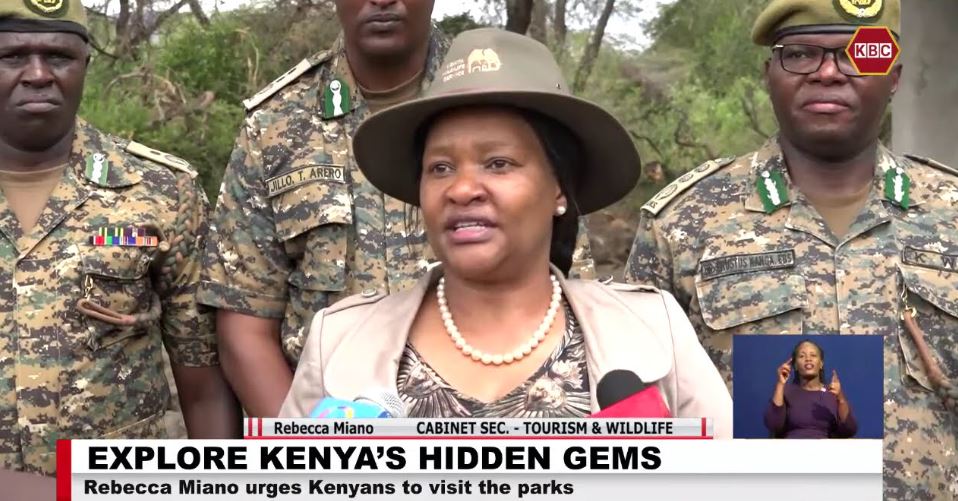 Tourism and Wildlife Cabinet Secretary Rebecca Miano has announced free entry to all game parks and reserves for Kenyans on Saturday, September 28, as part of the UN World Tourism Week celebrations kicking off on Monday.
Tourism and Wildlife Cabinet Secretary Rebecca Miano has announced free entry to all game parks and reserves for Kenyans on Saturday, September 28, as part of the UN World Tourism Week celebrations kicking off on Monday.
This initiative aims to promote domestic tourism and encourages Kenyans to explore and appreciate the nation’s rich heritage, according to Tourism and Wildlife Cabinet Secretary Rebecca Miano.
During a World Rhino Day event at Sereolipi School in Samburu County on Sunday, CS Miano emphasized the importance of this opportunity.
“The culmination of this significant event will allow Kenyans free access to all game parks and reserves on Saturday, September 28, 2024,” she stated.
Miano urged citizens to take full advantage of the chance to discover the country’s natural attractions.
“I encourage Kenyans to turn out in large numbers to see what our parks and reserves have to offer,” she added. The CS also reminded visitors to adhere to safety regulations while exploring these wildlife-rich areas.
This year’s UN World Tourism Day will focus on the crucial role of the tourism sector in promoting peace, fostering cultural understanding, and supporting reconciliation efforts worldwide. The theme, Tourism and Peace, underscores the connection between travel and peaceful coexistence.
Regarding rhino conservation, Miano highlighted Kenya’s commitment to protecting rhino populations and other wildlife for future generations.
“At the Ministry level, we have embraced innovative technologies such as drones and forensic evidence to strengthen our rhino conservation efforts,” she explained.
“I assure the global community that Kenya will continue playing its part in wildlife conservation, especially in expanding rhino ranges and ensuring their protection for posterity.”
Kenya’s Rhino Population
Kenya is a vital habitat for the eastern black rhino subspecies, which can be found in the Maasai Mara Game Reserve, Sera Community Conservancy, and five private sanctuaries in the Laikipia region. Laikipia alone is home to over half of Kenya’s total rhino population.
CS Miano noted that the implementation of the previous six editions of the rhino recovery action plan, along with the ongoing seventh edition, has increased black rhino populations by over 100 percent.
In 1989, Kenya’s rhino population stood at fewer than 400. By the end of 2022, estimates had surged to an impressive 1,890 rhinos, including 966 black rhinos, 922 white rhinos, and two northern whites.
Kenya currently ranks third in black rhino population, following South Africa and Namibia.
Miano indicated that the ongoing national wildlife census may reveal even higher rhino numbers than those recorded in 2022. She proudly noted, “Kenya is honored to host the world’s last remaining female northern white rhino, following the death of Sudan in 2018. His stuffed figurine now resides at the Nairobi National Museums as a lasting relic of an extraordinary species in our diverse wildlife portfolio.”
Additionally, Miano expressed optimism about the efforts of the Wildlife Research and Training Institute and other global researchers working to revive the northern white rhino from extinction.
“This ambitious and commendable effort aims to create northern white rhino embryos from genetic material and eventually implant them into southern white rhino females to produce calves,” she said.








